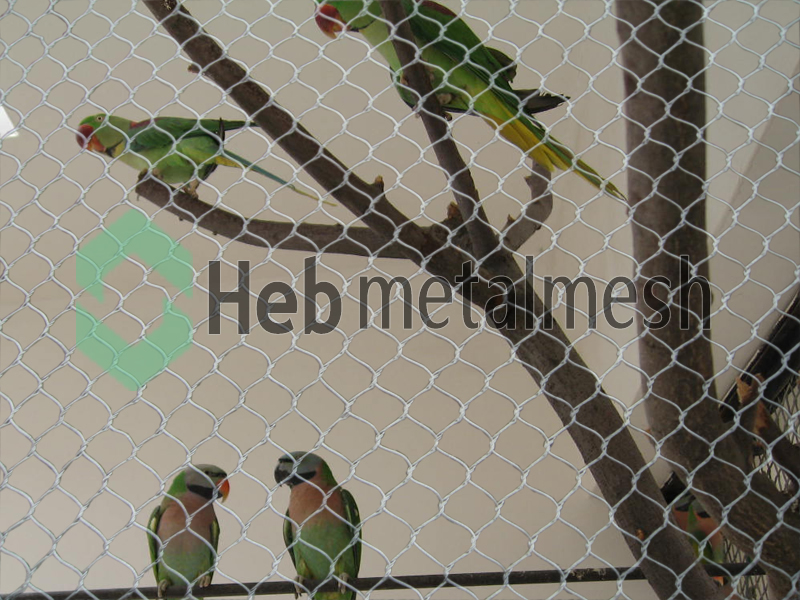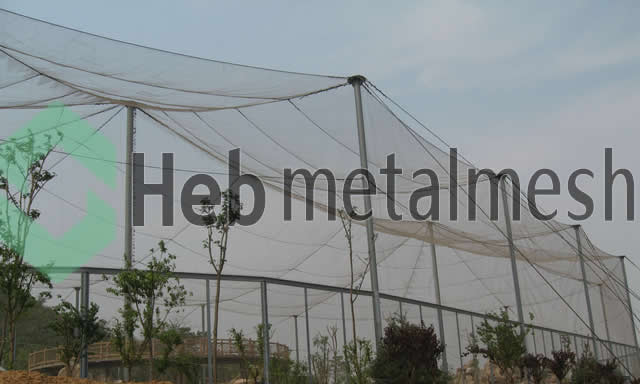Birds are a joy to watch, aren’t they? Their vibrant colors and melodious songs can brighten up any day.
But keeping them safe and secure can be a challenge. That’s where aviary netting comes into play.
This article will guide you through the ins and outs of aviary netting. From choosing the right material to installation tips, we’ve got you covered.

Why Aviary Netting is a Game-Changer for Bird Safety
Aviary netting is a real game-changer. It’s all about creating a safe haven for our feathered friends.
It acts as a bird barrier, keeping the birds in and the predators out. No more worrying about escapes or unwanted guests.
But it’s not just about safety. Aviary netting also helps control the spread of diseases. It contains bird droppings, reducing the risk of infection.
It’s a humane way to manage birds too. They get the freedom to move around, yet stay within a controlled space.
So, aviary netting is not just a net. It’s a safety net for birds.
Choosing the Right Netting Material
Choosing the right netting material is crucial. It’s not a one-size-fits-all situation.
You’ve got options like nylon, polyethylene, and stainless steel. Each has its own pros and cons.
For instance, nylon is strong and durable. But it might not be the best choice for outdoor enclosures. UV rays can weaken it over time.
On the other hand, stainless steel is rust-resistant. It’s a great choice for outdoor aviaries. But it can be a bit pricey.
Here’s a quick rundown of your options:
- Nylon: Strong, durable, but not UV-resistant
- Polyethylene: UV-resistant, lightweight, but less durable than nylon
- Stainless steel: Rust-resistant, durable, but more expensive
Choose wisely. Your birds’ safety depends on it.
Installation Tips for Maximum Durability
Installing aviary netting isn’t rocket science. But it does require some know-how.
First, make sure the netting is taut. Loose netting can lead to accidents. Birds can get tangled in it.
Second, secure the netting to a sturdy frame. This will ensure it can withstand the force of birds flying into it.
Lastly, consider hiring a professional if you’re unsure. It’s a small price to pay for your birds’ safety.
The Versatility of Aviary Netting: Beyond Bird Enclosures
Aviary netting isn’t just for bird enclosures. It’s a versatile tool with many uses.
For instance, it can protect crops from bird damage. Farmers can use it to keep birds away from their fields.
Fisheries also benefit from aviary netting. It can prevent birds from eating the fish.
Even in your backyard, it can be useful. It can keep birds away from your fruit trees.
So, aviary netting isn’t just for aviaries. It’s a handy tool for anyone dealing with bird-related issues.
Maintenance and Repair: Keeping Your Netting in Top Shape
Keeping your aviary netting in top shape is crucial. Regular checks are a must.
Look for any signs of wear and tear. This includes holes or frayed edges.
If you spot any damage, repair it promptly. This will prolong the life of your netting.
Remember, a well-maintained netting ensures the safety of your birds. So, don’t neglect this important task.
Aviary Netting and Bird Behavior: Creating a Stress-Free Environment
Aviary netting can help create a stress-free environment for birds. It allows them to move freely within a controlled space.
This freedom of movement is crucial for their well-being. It lets them exhibit natural behaviors.
The netting also provides a sense of security. Birds feel safe knowing they are protected from predators.
So, when used correctly, aviary netting can contribute to a healthier and happier bird population. It’s a win-win for both birds and their caretakers.
Conclusion: The Impact of Aviary Netting on Bird Conservation
Aviary netting plays a key role in bird conservation. It provides a safe and controlled environment for endangered species.
By preventing escapes and predation, it helps increase their population. It’s a simple yet effective tool in our conservation efforts.
So, aviary netting is not just about bird safety. It’s about preserving our avian biodiversity for future generations.


